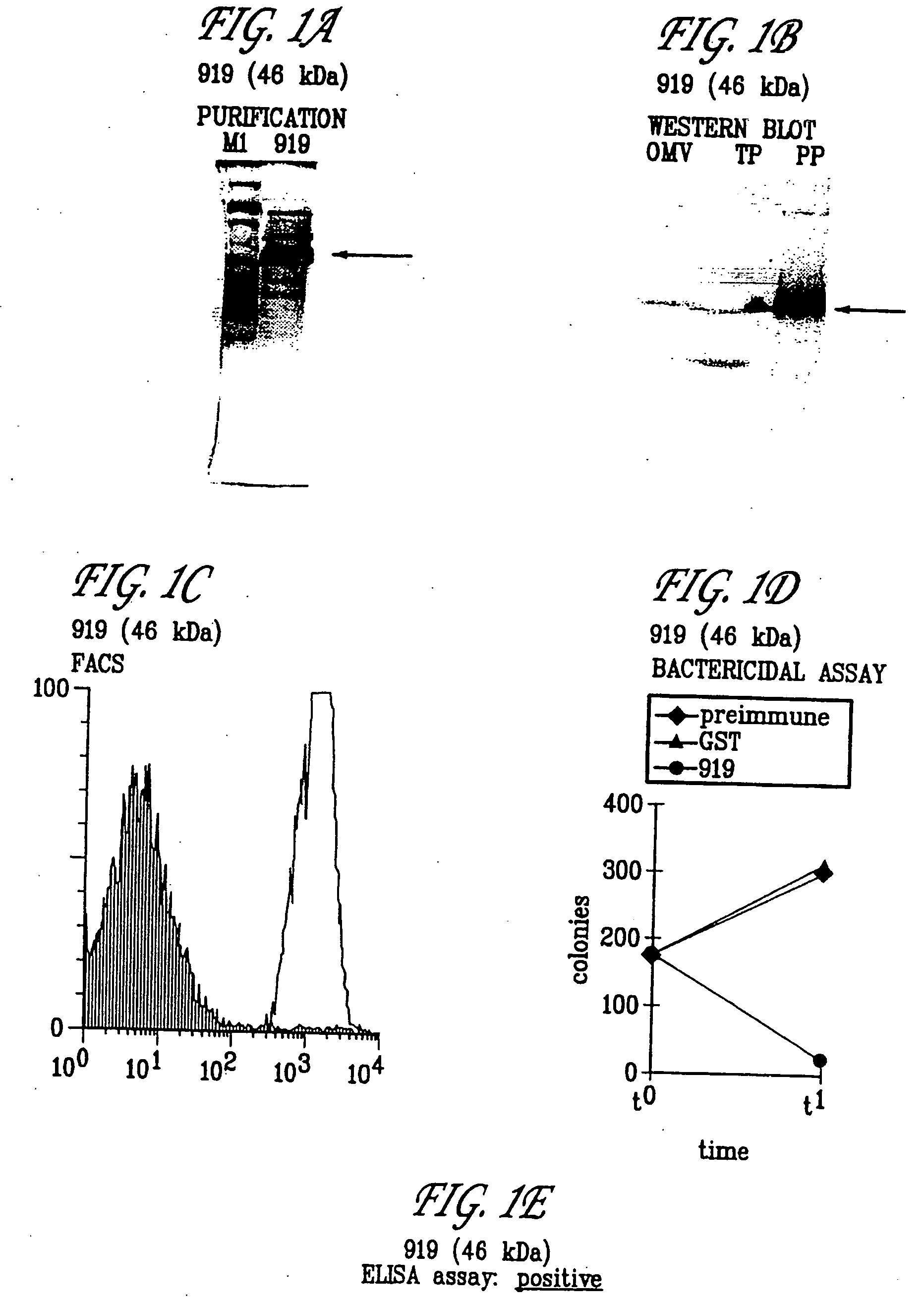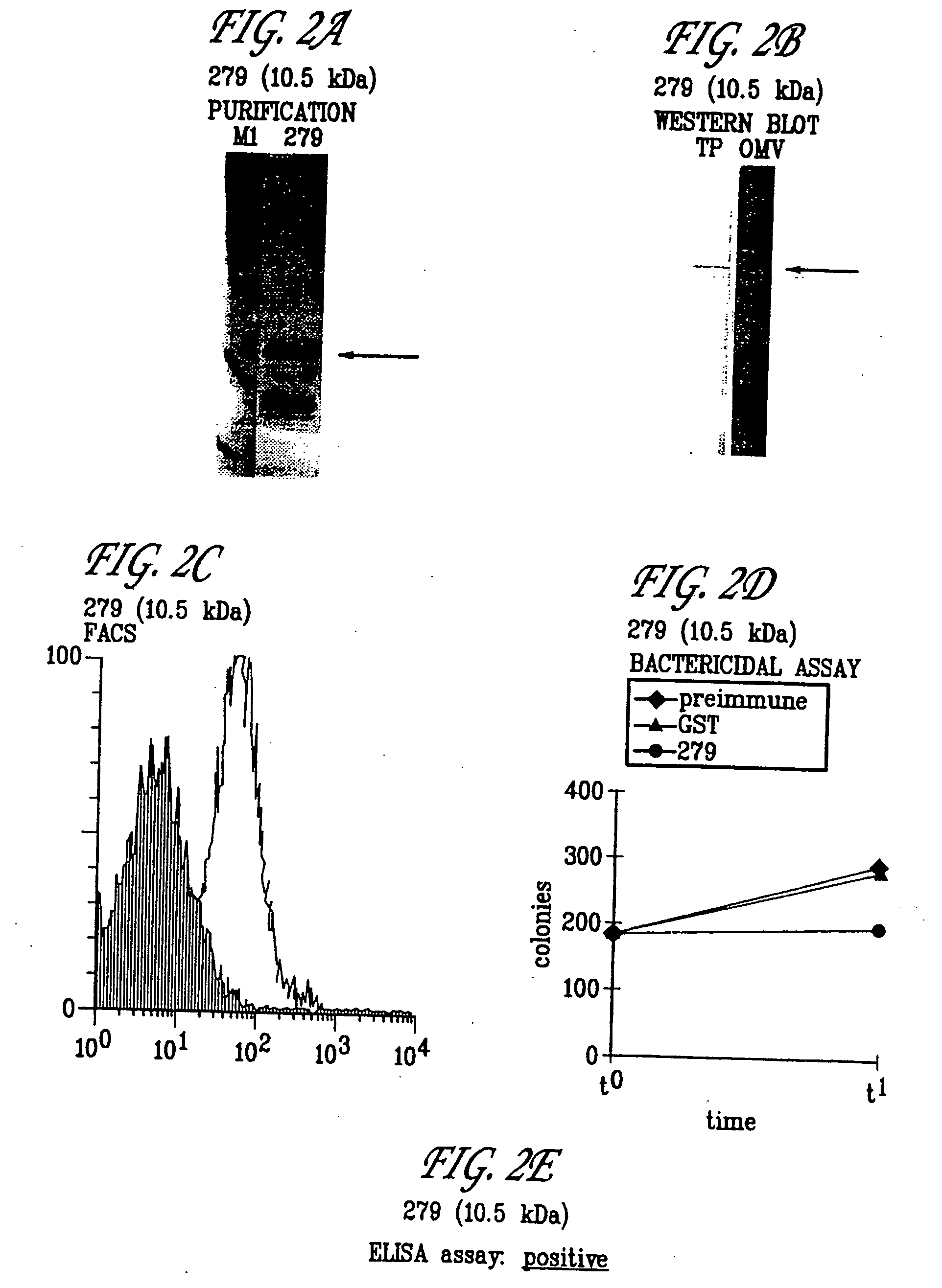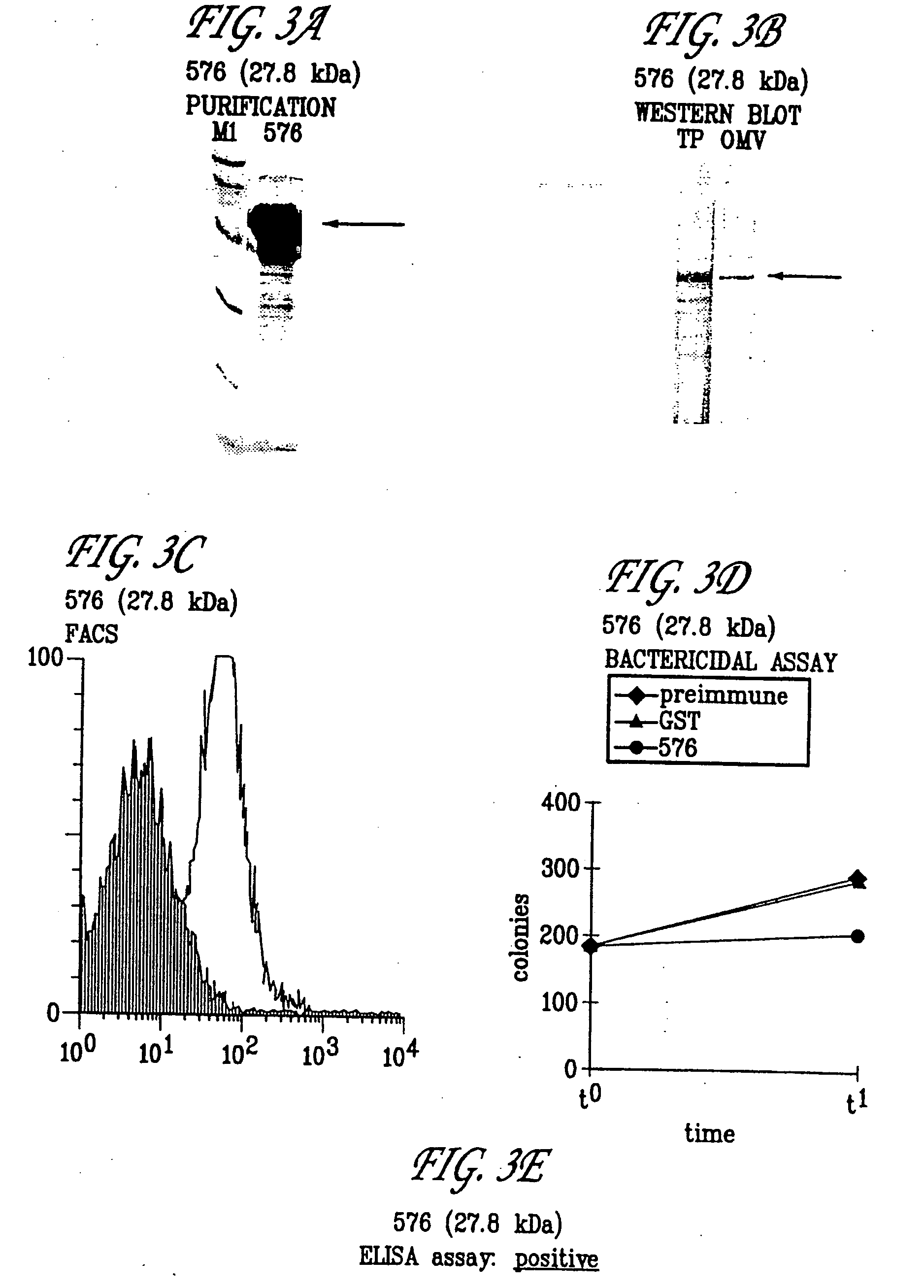Neisseria genomic sequences and methods of their use
a genomic sequence and neisseria technology, applied in the field of neisseria genomic sequences, can solve the problems of inability to use, poor immune response and short protection time, and meningococcus b (menb) remains a problem, and achieve the effect of efficient harvesting and facilitating the isolation and purification of recombinant proteins
- Summary
- Abstract
- Description
- Claims
- Application Information
AI Technical Summary
Benefits of technology
Problems solved by technology
Method used
Image
Examples
example 1
[0317] The following ORFs were predicted from the contig sequences and / or the full length sequence using the methods herein described.
[0318] Localization of the ORFs
5 ORF: contig: 279 gnm4.seq
[0319] The following partial DNA sequence was identified in N. meningitidis :
6 m279.seq 1 ATAACGCGGA TTTGCGGCTG CTTGATTTCA ACGGTTTTCA GGGCTTCGGC 51 AAGTTTGTCG GCGGCGGGTT TCATCAGGCT GCAATGGGAA GGTACGGACA 101 CGGGCAGCGG CAGGGCGCGT TTGGCACCGG CTTCTTTGGC GGCAGCCATG 151 GCGCGTCCGA CGGCGGCGGC GTTGCCTGCA ATCACGATTT GTCCGGGTGA 201 GTTGAAGTTG ACGGCTTCGA CCACTTCGCT TTGGGCGGCT TCGGCACAAA 251 TGGCTTTAAC CTGCTCATCT TCCAAGCCGA GAATCGCCGC CATTGCGCCC 301 ACGCCTTGCG GTACGGCGGA CTGCATCAGT TCGGCGCGCA GGCGCACGAG 351 TTTGACCGCG TCGGCAAAAT TCAATGCGCC GGCGGCAACG AGTGCGGTGT 401 ATTCGCCGAG GCTGTGTCCG GCAACGGCGG CAGGCGTTTT GCCGCCCGCT 451 TCTAAATAG
[0320] This corresponds to the amino acid sequence :
7 m279.pep 1 ITRICGCLIS TVFRASASLS AAGFIRLQWE GTDTGSGRAR LAPASLAAAM 51 ARPTAAALPA ITICPGELKL TASTTSLWAA SAQMALTCSS SKPRIAAIA...
example 2
Expression of ORF 919
[0431] The primer described in Table 1 for ORF 919 was used to locate and clone ORF 919. The predicted gene 919 was cloned in pET vector and expressed in E. coli. The product of protein expression and purification was analyzed by SDS-PAGE. In panel A) is shown the analysis of 919-His fusion protein purification. Mice were immunized with the purified 919-His and sera were used for Western blot (panel B), FACS analysis (panel C), bactericidal assay (panel D), and ELISA assay (panel E). Symbols: M1, molecular weight marker; PP, purified protein, TP, N. meningitidis total protein extract; OMV, N. meningitidis outer membrane vesicle preparation. Arrows indicate the position of the main recombinant protein product (A) and the N. meningitidis immunoreactive band (B). These experiments confirm that 919 is a surface-exposed protein and that it is a useful immunogen. The hydrophilicity plots, antigenic index, and amphipatic regions of ORF 919 are provided in FIG. 10. The ...
example 3
Expression of ORF 279
[0432] The primer described in Table 1 for ORF 279 was used to locate and clone ORF 279. The predicted gene 279 was cloned in pGex vector and expressed in E. coli. The product of protein expression and purification was analyzed by SDS-PAGE. In panel A) is shown the analysis of 279-GST purification. Mice were immunized with the purified 279-GST and sera were used for Western blot analysis (panel B), FACS analysis (panel C), bactericidal assay (panel D), and ELISA assay (panel E). Symbols: M1, molecular weight marker; TP, N. meningitidis total protein extract; OMV, N. meningitidis outer membrane vescicle preparation. Arrows indicate the position of the main recombinant protein product (A) and the N. meningitidis immunoreactive band (B). These experiments confirm that 279 is a surface-exposed protein and that it is a useful immunogen. The hydrophilicity plots, antigenic index, and amphipatic regions of ORF 279 are provided in FIG. 11. The AMPHI program is used to p...
PUM
| Property | Measurement | Unit |
|---|---|---|
| Fraction | aaaaa | aaaaa |
Abstract
Description
Claims
Application Information
 Login to View More
Login to View More - R&D
- Intellectual Property
- Life Sciences
- Materials
- Tech Scout
- Unparalleled Data Quality
- Higher Quality Content
- 60% Fewer Hallucinations
Browse by: Latest US Patents, China's latest patents, Technical Efficacy Thesaurus, Application Domain, Technology Topic, Popular Technical Reports.
© 2025 PatSnap. All rights reserved.Legal|Privacy policy|Modern Slavery Act Transparency Statement|Sitemap|About US| Contact US: help@patsnap.com



